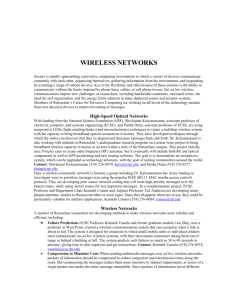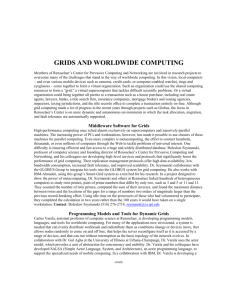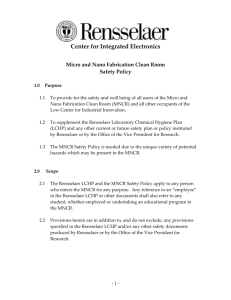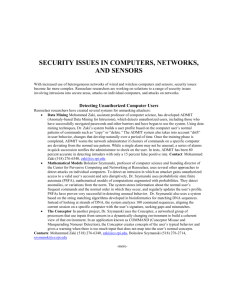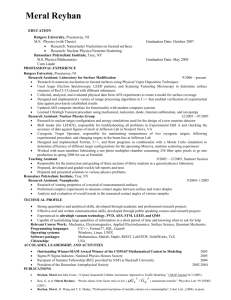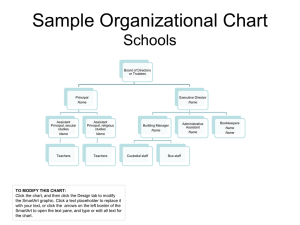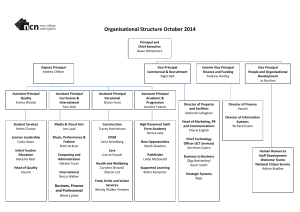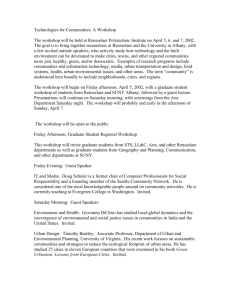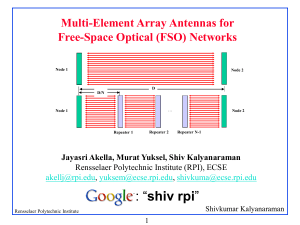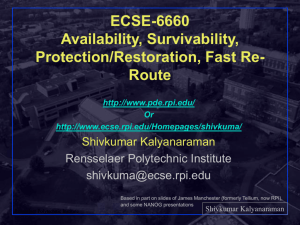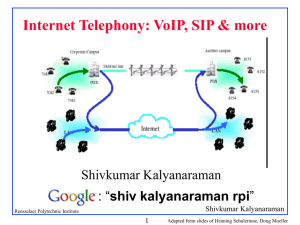doc
advertisement
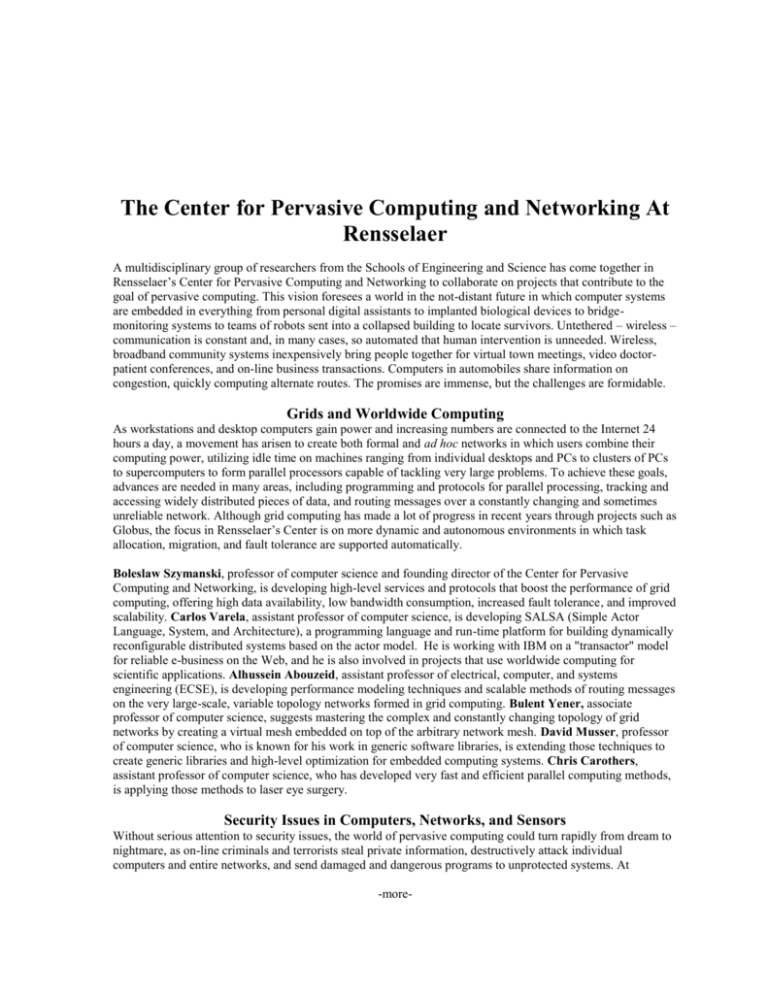
The Center for Pervasive Computing and Networking At Rensselaer A multidisciplinary group of researchers from the Schools of Engineering and Science has come together in Rensselaer’s Center for Pervasive Computing and Networking to collaborate on projects that contribute to the goal of pervasive computing. This vision foresees a world in the not-distant future in which computer systems are embedded in everything from personal digital assistants to implanted biological devices to bridgemonitoring systems to teams of robots sent into a collapsed building to locate survivors. Untethered – wireless – communication is constant and, in many cases, so automated that human intervention is unneeded. Wireless, broadband community systems inexpensively bring people together for virtual town meetings, video doctorpatient conferences, and on-line business transactions. Computers in automobiles share information on congestion, quickly computing alternate routes. The promises are immense, but the challenges are formidable. Grids and Worldwide Computing As workstations and desktop computers gain power and increasing numbers are connected to the Internet 24 hours a day, a movement has arisen to create both formal and ad hoc networks in which users combine their computing power, utilizing idle time on machines ranging from individual desktops and PCs to clusters of PCs to supercomputers to form parallel processors capable of tackling very large problems. To achieve these goals, advances are needed in many areas, including programming and protocols for parallel processing, tracking and accessing widely distributed pieces of data, and routing messages over a constantly changing and sometimes unreliable network. Although grid computing has made a lot of progress in recent years through projects such as Globus, the focus in Rensselaer’s Center is on more dynamic and autonomous environments in which task allocation, migration, and fault tolerance are supported automatically. Boleslaw Szymanski, professor of computer science and founding director of the Center for Pervasive Computing and Networking, is developing high-level services and protocols that boost the performance of grid computing, offering high data availability, low bandwidth consumption, increased fault tolerance, and improved scalability. Carlos Varela, assistant professor of computer science, is developing SALSA (Simple Actor Language, System, and Architecture), a programming language and run-time platform for building dynamically reconfigurable distributed systems based on the actor model. He is working with IBM on a "transactor" model for reliable e-business on the Web, and he is also involved in projects that use worldwide computing for scientific applications. Alhussein Abouzeid, assistant professor of electrical, computer, and systems engineering (ECSE), is developing performance modeling techniques and scalable methods of routing messages on the very large-scale, variable topology networks formed in grid computing. Bulent Yener, associate professor of computer science, suggests mastering the complex and constantly changing topology of grid networks by creating a virtual mesh embedded on top of the arbitrary network mesh. David Musser, professor of computer science, who is known for his work in generic software libraries, is extending those techniques to create generic libraries and high-level optimization for embedded computing systems. Chris Carothers, assistant professor of computer science, who has developed very fast and efficient parallel computing methods, is applying those methods to laser eye surgery. Security Issues in Computers, Networks, and Sensors Without serious attention to security issues, the world of pervasive computing could turn rapidly from dream to nightmare, as on-line criminals and terrorists steal private information, destructively attack individual computers and entire networks, and send damaged and dangerous programs to unprotected systems. At -more- Rensselaer, Vera Kettnaker, assistant professor of computer science, is developing a time-sensitive video surveillance system to monitor high-security rooms to detect intruders or suspicious employee behavior. Mohammed Zaki, assistant professor of computer science, has developed ADMIT, a data-mining system that detects clusters of unusual behavior by a computer user. Boleslaw Szymanski uses probabilistic state finite automata, mathematical models of computations augmented with probabilities, to detect variations from the user’s normal behavior. He also has developed a system to use bioinformatics techniques, normally used to match DNA sequences, to match command sequences with a user’s normal behavior, and he uses a technique known as the Conceptor in an application known as COMMAND to create concepts of a user’s typical behavior and warn of variations. To detect network attacks, Dr. Szymanski is adapting his DOORS (Distributed Object Oriented Repository Simulation) program, a network management tool, to collect information that can be used to recognize a denial of service attack. Dr. Musser is exploring the use of generic code-carrying proofs as a secure and memory-stingy method of sending programming code. Dr. Yener is working on security for an ad hoc wireless system, in which an on-line controller would make intelligent decisions about security levels as battery power diminishes. Biplab Sikdar, ECSE assistant professor, is identifying security gaps and designing protection against specific attacks in the Border Gateway Protocol, which regulates traffic as it moves from network to network. Network Modeling, Simulation, and Management Rensselaer researchers have developed very efficient methods to run simulations to detect problems on computer networks and then to apply traffic management techniques to solve the problems. Their goals are to reduce congestion, automate many management tasks, and improve quality of service. Dr. Carothers created ROSSNet (Rensselaer’s Optimistic Simulation System), a very fast simulation method, and works with Shivkumar Kalyanaraman, ECSE associate professor, to use these simulations to optimize very complex systems. Dr. Kalyanaraman, widely recognized for his work in traffic management, also uses a “recursive random search algorithm” to continuously improve network performance by adjusting parameters to changing conditions. He is developing BANANAS, an Internet architectural framework, that gives messages more flexibility in the routes they choose, and he is working on overlay systems that can deliver very reliable broadband services to groups of users. Dr. Szymanski and his team developed Genesis (The General Network Simulation Integration System), which divides a large network or even the entire Internet into domains and runs a simulation of each over a given time interval on a separate processor. The processors then exchange information and run new simulations for the time interval until they converge on a solution. Wireless Networks Unlike cell phone systems, in which messages travel by way of fixed towers, devices in ad hoc wireless systems communicate directly with each other. They pass messages from node to node as needed, even as some devices move around and others unpredictably come on- or off-line, creating a constant need to find new routes for messages. Rensselaer researchers are working on all levels of the technology to make such networks efficient and reliable. Dr. Kalyanaraman and Partha Dutta, also an ECSE assistant professor, are using microelectronics techniques to create a multihop optical wireless system. Dr. Kalyanaraman also is using both radio frequency (RF) and optical techniques to build an inexpensive and easily accessible community network around the Rensselaer campus. ECSE Professor Kenneth Vastola has worked on ad hoc wireless technology that can warn when a node is about to fail, while Alhoussein Abouzeid is looking at ways to optimize computation and communication costs by managing message compression. Costas Busch, assistant professor of computer science, studies packet routing problems, and with Dr. Yener, is considering ways to synchronize nodes to minimize packet collisions. Rensselaer is also working on distributed networks of sensors and actuators. Richard Radke, ECSE assistant professor, is developing methods through which groups of cameras can exchange information and work together, while Wesley Huang, assistant professor of computer science, and Jeff Trinkle, professor and chair of computer science, are developing techniques for distributed groups of robots to communicate and cooperate. Rensselaer’s new Satellite Center on the Hudson River is developing an array of monitoring, communication, and visualization tools to analyze the River. Contacts: Boleslaw Szymanski (518) 276-2714, szymansk@cs.rpi.edu, Shivkumar Kalyanaraman (518) 2768079, kalyas@rpi.edu, and Bulent Yener (518) 276-6907, yener@cs.rpi.edu
